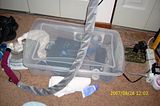Help me to design a new machinery for u!
-
SleepTechulous
Re: Help me to design a new machinery for u!
I posted in this thread as well but suddenly, it is gone. Very strange.
-
SleepTechulous
Re: Help me to design a new machinery for u!
I posted in this thread as well but suddenly, it is gone. Very strange.
-
SleepTechulous
Re: Help me to design a new machinery for u!
I posted in this thread as well but suddenly, it is gone. Very strange.
-
SleepTechulous
Re: Help me to design a new machinery for u!
I posted in this thread as well but suddenly, it is gone. Very strange.
-
SleepTechulous
Re: Help me to design a new machinery for u!
I posted in this thread as well but suddenly, it is gone. Very strange.
-
SleepTechulous
Re: Help me to design a new machinery for u!
I posted in this thread as well but suddenly, it is gone. Very strange.
-
SleepTechulous
Re: Help me to design a new machinery for u!
I posted in this thread as well but suddenly, it is gone. Very strange.
-
SleepTechulous
Re: Help me to design a new machinery for u!
I posted in this thread as well but suddenly, it is gone. Very strange.
-
SleepTechulous
Re: Help me to design a new machinery for u!
I posted in this thread as well but suddenly, it is gone. Very strange.
Re: Help me to design a new machinery for u!
Some excellent points.xj220c wrote:Well, at the risk of teaching people how to compete against us . . . .GumbyCT wrote:Out of curiosity what are the barriers to entry?
I could write a 200-page white paper on why somebody would be nuts to try and get into this market. I'll attempt to sum it up in a few paragraphs here. Any one of these factors would keep me from entering this market. Bear in mind that all of these factors are intertwined to some extent so you have to consider them as a whole as well.
1. The customer is not the end-user.
CPAP manufacturers don't sell to the end-users, they sell to the middle-man DME vendors and clinical suppliers. You can't market your product to the people who actually use it. In fact, you can't even identify those people. They buy the machine within days of getting the script for it so you never have a chance to influence that buying decision. It makes no difference if you've got the best machine on the market or if there are features on your box that distinguish it from all the others. People are just going to buy what the DME supplier hands them or what their insurance company is going to pay for. If you can't effectively market your machine to the end-user then you have very few options for gaining share in the market.
2. The market is dominated by existing big players.
The CPAP market is already dominated by existing manufacturers with substantial resources. Respironics is a $1B company with 5,000 employees. ResMed is almost as big. If DeVilbiss or one of the other players wanted to they could drop a few hundred million more into the market as well. In order to penetrate that space you have to go in and displace existing relationships between these huge companies and the DME suppliers just to get your foot in the pool. That's a daunting proposition. The existing makers have lots of ways to incentivize their DME's to keep you out. You don't have a lot of options for breaking up those existing relationships.
3. Price is king.
Because of this large supplier/middle-man market structure the dominate factor driving sales is price. DME suppliers are bound by insurance reimbursement policies so they can't be flexible on pricing. They could therefore care less about the size of your LCD display, whether your software is user friendly, or if the plastic hinges on your humidifier give out in six months. What matters to the end-user accounts for a very small part of the DME buying decision. What they really care about is price. The big established manufacturers are therefore at a HUGE advantages over new entrants because the big boys already have economies of scale that let them keep their prices low. A new machine maker would probably have to sell at a loss for the first few years just to establish enough market share to get their costs down to competitive levels. Price driven markets are not where you want to be starting new companies.
4. Blocking patents are in place.
There are already a couple of hundred issued patents covering CPAP technology and, as a general rule, there are usually 2 or 3 unissued patent applications for every issued patent. Any one of those patents is enough to block you from introducing your product. You're going to have to spend at least $500k and a couple of months just to find out if your proposed design is already covered by somebody else's patent. Then you're going to have to try and negotiate licenses with those patent holders who - even if they are willing to let you have the license - are going to be rather hesitant to let a new competitor into their market without a hefty royalty being paid. Unless you've got some big new break-through technology that you can patent and cross-license to the existing players the chance of you getting into the market without either paying significant royalties or being sued for patent infringement is pretty low.
5. There are significant regulatory costs.
So lets say that you decide there is a market opening and that you can get around the patent problem. Now all you have to do is get it all past the FDA and various other regulatory bodies all around the world. In order to do this be prepared to write a check for an amount that will make your head spin.
Just to give an idea of what regulatory expenses can be like: We recently decided to move a switch on one of our machines about an inch to one side in response to some complaints we had about users accidentally bumping the switch and triggering it during use. This cost us about $800 in engineering, about $2,000 in tooling, and about $1,000 to reprint existing manuals to reflect the change. It then cost us over $100,000 to re-certify the design to various safety standards all around the world - just because we moved the switch a little.
To get something through initial safety and efficacy testing will cost you many, many, many times that amount - and that's assuming everything goes well. If you have to go back through redesign and retesting you can easily triple those numbers and there's no guarantee that the design will even be approved at the end of the whole process. You then have to go back through re-certification every time you bring out something new, and you have to keep bringing out new stuff in order to keep up with the big boys.
I haven't sat down and done a formal study of it, but I would assume the following cost if you really wanted to get a new CPAP machine to market (assuming that you didn't have any patents blocking your way):
Startup and initial design: $2-4M
Clinical approval, initial marketing efforts: $20-30M
Full scale manufacturing ramp-up, full marketing effort, continued R&D, regulatory surveillance: $100M over first five years after approval
So to successfully get your product to market I'd say you need to invest around $125M over seven to ten years. All that to build a company that's going to make $5M in earnings on $100-200M in revenue in a cut-throat, price-driven market that could disappear overnight if somebody develops better technology.
Any businessman that thinks this is a good idea needs to have their medication adjusted.
Admittedly I'm not a CPAP market insider and maybe there are forces at work inside that particular market that I'm not privy to. It could be that I'm way off base and that there is an opportunity if you play it right. I really, really doubt it though. Unless CPAP is significantly different than any other medical device market you just can't get into it unless you're there on day one before anybody else has a chance to establish themselves. The only way to break through is to develop something so radically different and desirable that it changes the market dynamics and breaks the existing manufacturer's stranglehold.
The only real chance of a new manufacturer entering the scene is if one of the existing mega-corps gets the hots for pulmonary equipment and decides to jump in. Somebody like GE or Thermo could enter this market in a heartbeat. Those companies have $125M fall out of their nose every time they sneeze and they have existing distribution networks so they wouldn't have to fight their way in. It's also entirely possible that somebody like that could buy one of the existing small manufacturers and then go after the market based on improved product design. I don't think that's very likely either, but you never know.
One place where there may be a larger opportunity is in masks. Masks have a whole different economic than machines and that's why you're seeing much greater evolution in mask design. Even so I doubt you'll see entry of independent mask producers happening. It's still a big up-hill battle to get into that market as well.
Cheers,
XJ.
Thank You for an honest reply.
It seems there is prob more money in mask making or other re-usable CPAP supplies.
_________________
| Humidifier: HC150 Heated Humidifier With Hose, 2 Chambers and Stand |
| Additional Comments: New users can't remember they can't remember YET! |
BeganCPAP31Jan2007;AHI<0.5
I have no doubt, how I sleep affects every waking moment.
I am making progress-NOW I remember that I can't remember

If this isn’t rocket science why are there so many spaceshots?
Be your own healthcare advocate!
I have no doubt, how I sleep affects every waking moment.
I am making progress-NOW I remember that I can't remember
If this isn’t rocket science why are there so many spaceshots?
Be your own healthcare advocate!
-
warmaircoldroom
Re: Help me to design a new machinery for u!
Include the option to mount an air hose on the INTAKE of the CPAP such that it can draw air from under the covers to feed the device. Also the potential to preheat room air solely for the CPAP.
I sleep best is a cold room and in winter that humidifier is taxed to the max, having a choice of pre-heated, prehumidified air from under the covers via a hose is better than having to bring the CPAP and humidifier in the bed with me.
I sleep best is a cold room and in winter that humidifier is taxed to the max, having a choice of pre-heated, prehumidified air from under the covers via a hose is better than having to bring the CPAP and humidifier in the bed with me.
Re: Help me to design a new machinery for u!
The only way to solve this problem is through patient education and encouragement from the professional sleep medicine community for patients to comparison shop several DMEs before selecting their DME. I don't see this as happening anytime soon. *sigh*xj220c wrote: 1. The customer is not the end-user.
CPAP manufacturers don't sell to the end-users, they sell to the middle-man DME vendors and clinical suppliers. You can't market your product to the people who actually use it. In fact, you can't even identify those people. They buy the machine within days of getting the script for it so you never have a chance to influence that buying decision. It makes no difference if you've got the best machine on the market or if there are features on your box that distinguish it from all the others. People are just going to buy what the DME supplier hands them or what their insurance company is going to pay for. If you can't effectively market your machine to the end-user then you have very few options for gaining share in the market.
I am fortunate: I had time to educate myself between when the OSA diagnosis was made and when I picked up my CPAP machine: My PCP's office called me and told me the sleep study indicated that I had moderate OSA and that I needed to set up an appointment with the sleep doctor's office and make an appointment for a titration study. During that time I spent a lot of time on line and calling my insurance and various in-town DMEs in an attempt to locate a DME that would provide me with a full-data capable machine by default instead of a brick. So by the time my sleep doc's office started pressuring me to use their favorite DME, I was already politely, but insistantly saying, "No, I prefer to find a DME of my choice that I know my insurance will take. I'll let you know when I find one." It took me about a week more to locate the DME I'm now using: One that specializes in CPAP equipment and that refuses to supply their customers with so-called bricks.
But on this board and other sleep apnea support forums, you see post after post of patients who seem to think they have no choice in choosing a DME: The doc's office calls the prescription into a DME that the patient has never heard of or worked with or .... And then the patient is set up with a brick.
Big players (Resprionics and ResMed in particular) are definitely part of the problem: I don't recall a single DME offering me a CPAP machine that was not Resprionics, ResMed or Fisher&Pakel.2. The market is dominated by existing big players.
The CPAP market is already dominated by existing manufacturers with substantial resources. Respironics is a $1B company with 5,000 employees. ResMed is almost as big. If DeVilbiss or one of the other players wanted to they could drop a few hundred million more into the market as well. In order to penetrate that space you have to go in and displace existing relationships between these huge companies and the DME suppliers just to get your foot in the pool. That's a daunting proposition. The existing makers have lots of ways to incentivize their DME's to keep you out. You don't have a lot of options for breaking up those existing relationships.
3. Price is king.
Because of this large supplier/middle-man market structure the dominate factor driving sales is price. DME suppliers are bound by insurance reimbursement policies so they can't be flexible on pricing. They could therefore care less about the size of your LCD display, whether your software is user friendly, or if the plastic hinges on your humidifier give out in six months. What matters to the end-user accounts for a very small part of the DME buying decision. What they really care about is price. The big established manufacturers are therefore at a HUGE advantages over new entrants because the big boys already have economies of scale that let them keep their prices low. A new machine maker would probably have to sell at a loss for the first few years just to establish enough market share to get their costs down to competitive levels. Price driven markets are not where you want to be starting new companies.
But "Price is King" is misleading. After all, the DeVilbiss full-data capable machines list for much, much less than the Resprionic and ResMed bricks. If "Price is King" was a significant factor in deciding which CPAPs to push onto patients, then why are so many naive patients who are rushed into or simply "set up" with CPAP machines without their input into the choice of a DME are given Resprionic and ResMed bricks instead of cheaper, but more capable DeVilbiss machines?. And even in the Reprionics and ResMed lines, there's not that much difference in price (about $100?) between the the basic CPAP bricks and the full data APAPs. Seems to me that if Resprionics and ResMed actually gave a hoot about patient experience, they'd simply quit marketing their bricks.
I think xj220c is correct here: There are significant regulatory costs in bringing a new design to market. And that certainly hurts newer/smaller companies more than it does the "big boys".5. There are significant regulatory costs.
<many specific details omitted>
To get something through initial safety and efficacy testing will cost you many, many, many times that amount - and that's assuming everything goes well. If you have to go back through redesign and retesting you can easily triple those numbers and there's no guarantee that the design will even be approved at the end of the whole process. You then have to go back through re-certification every time you bring out something new, and you have to keep bringing out new stuff in order to keep up with the big boys.<more details omitted>
But I also want to add my own two cents into what would be nice to see on a newly designed CPAP/APAP machine, even though many of these are repeats of what others have said:
1) No bottom-line "brick" version at all. Make the minimum, cheapest version of the machine full data capable and publicly release the important parts of your algorithms for determining Hypopneas, Obstructive Apneas, and Central Apneas along with some kind of verification data that's been done through correlating the machine's scoring of the data with a quality polysonmography scored by qualified sleep techs for a large enough sample size to be statistically valid. Have a patient's version of the software available openly at a reasonable price or included with the machine itself.
2) Quiet, small, with an easy to use humidifier. A way to check the water level without taking the tank out would be nice.
3) Integrated alarm clock and integrated on-board ability to upload and play music---like the new F&P Premo CPAP. [A speaker jack so that the user would have to provide the speakers would be ok in my opinion. That would help minimize the footprint of the machine for those not wanting to play music at night.]
4) Hose connection NOT coming out of the back of the machine or humidifier would be nice. This would allow the machine to be placed much closer to the back of the table where it would be harder to pull it off the table or otherwise accidently knock it off the table.
5) Large, easy to find buttons for On/Off and to set the humidifier. These are things people need to find in the dark and without their glasses on. The S9's two large round buttons are actually a plus on being able to use it without turning on the table lamp by the bed.
_________________
| Machine: DreamStation BiPAP® Auto Machine |
| Mask: Swift™ FX Nasal Pillow CPAP Mask with Headgear |
| Additional Comments: PR System DreamStation and Humidifier. Max IPAP = 9, Min EPAP=4, Rise time setting = 3, minPS = 3, maxPS=5 |
- chunkyfrog
- Posts: 34545
- Joined: Mon Jul 12, 2010 5:10 pm
- Location: Nowhere special--this year in particular.
Re: Help me to design a new machinery for u!
Your thread is a good thing:
--The smart cpap manufacturers should be reading the posts on this thread--because their competitors probably are.
Note to Devilbiss Marketing--my backup will definitely be one of yours.
--The smart cpap manufacturers should be reading the posts on this thread--because their competitors probably are.
Note to Devilbiss Marketing--my backup will definitely be one of yours.
_________________
| Mask: AirFit™ P10 For Her Nasal Pillow CPAP Mask with Headgear |
| Additional Comments: Airsense 10 Autoset for Her |
Re: Help me to design a new machinery for u!
Good design features:
1. Manufacturing, marketing and delivery costs: US$ 0.10
2. Selling price: US$ 10.00
3. Usage feature: Addictive
1. Manufacturing, marketing and delivery costs: US$ 0.10
2. Selling price: US$ 10.00
3. Usage feature: Addictive
Rooster
I have a vision that we will figure out an easy way to ensure that children develop wide, deep, healthy and attractive jaws and then obstructive sleep apnea becomes an obscure bit of history.https://www.youtube.com/watch?v=0ycw4uaX ... re=related
I have a vision that we will figure out an easy way to ensure that children develop wide, deep, healthy and attractive jaws and then obstructive sleep apnea becomes an obscure bit of history.https://www.youtube.com/watch?v=0ycw4uaX ... re=related
Re: Help me to design a new machinery for u!
The reason it should be lower is so the water runs back into the chamber and doesn't collect in the hose. I put my machine in a clear plastic Sterilite container which helps to keep the filters much cleaner as the dust falls on the lid which is loosely placed on top of the container to allow for air flow.GumbyCT wrote:Don't fight gravity put it on the floor. Mine has never fallen off the floor. It should be lower than your head anyway.snoozysue wrote:I worry that when I am asleep I might accidently knock the unit off the bedside table (I did this on the only night that I have slept away from home since I have begun using it and it was full of water!).
I would like an easy, secure way to "anchor" it to the bedside table.
More here -
viewtopic.php?f=1&t=38633&p=340999&hili ... er#p340999

and here
viewtopic.php?f=1&t=54248&p=505837&hili ... te#p505837
_________________
| Humidifier: HC150 Heated Humidifier With Hose, 2 Chambers and Stand |
| Additional Comments: New users can't remember they can't remember YET! |
Last edited by GumbyCT on Sun Oct 31, 2010 11:18 am, edited 1 time in total.
BeganCPAP31Jan2007;AHI<0.5
I have no doubt, how I sleep affects every waking moment.
I am making progress-NOW I remember that I can't remember

If this isn’t rocket science why are there so many spaceshots?
Be your own healthcare advocate!
I have no doubt, how I sleep affects every waking moment.
I am making progress-NOW I remember that I can't remember
If this isn’t rocket science why are there so many spaceshots?
Be your own healthcare advocate!











